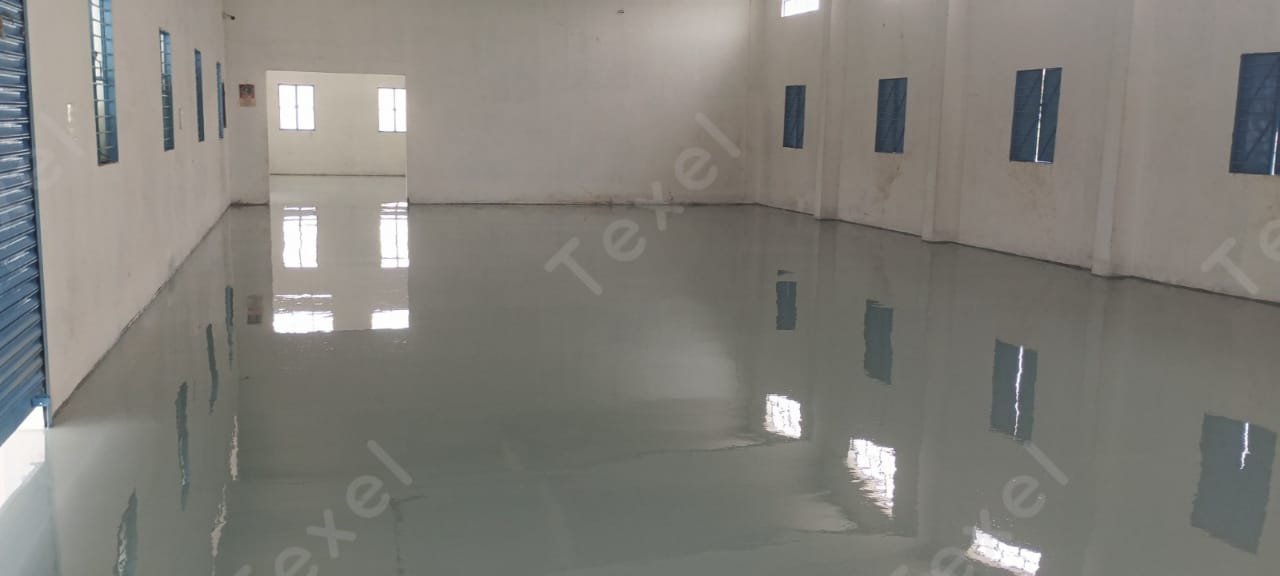WILL EPOXY FLOORING GET CRACKS?
Epoxy flooring can crack, but whether it does depends on several factors:
Why Epoxy Flooring Might Crack
- Subfloor Movement – Epoxy is rigid, so if the concrete underneath shifts, expands, or contracts, cracks in the concrete can transfer through the epoxy.
- Poor Surface Preparation – If the concrete wasn’t cleaned, leveled, or repaired before the application of epoxy, weak spots may lead to cracking.
- Heavy Impact or Overloading – Dropping very heavy items or driving heavy machinery over the floor can cause cracks.
- Improper Installation – Applying epoxy too thinly, mixing incorrectly, or not allowing it to cure properly can make it more brittle.
- Temperature Changes – Extreme heat or cold can stress the surface, especially if the installation wasn’t designed for thermal expansion.
Here’s a practical guide to prevent cracks in epoxy flooring:
- Prepare the Concrete Properly
- Repair cracks first: Fill all visible cracks with an epoxy crack filler before coating.
- Level the surface: Grind or shot-blast uneven spots to prevent stress points.
- Remove moisture: Moisture in the slab can cause bubbling, peeling, and stress cracks. Use a moisture barrier if needed.
- Use the Right Materials
- Primer coat: Apply a penetrating epoxy primer that bonds well with the concrete.
- Flexible formulations: Choose epoxy systems with added flexibility or go for polyaspartic / polyurethane topcoats which better handle movement.
- Correct thickness: Apply epoxy to the manufacturer’s recommended depth (too thin = weak, too thick = brittle).
- Control Environment During Installation
- Temperature & humidity: Install when conditions are within the product’s specified range. Avoid extreme hot/cold.
- Curing time: Let the epoxy cure fully before heavy use—rushing can cause weak bonding.
- Manage Structural Stress
- Expansion joints: Honor or cut joints into large floors to allow the concrete to expand and contract. Don’t coat over them without flexible joint fillers.
- Prevent overloading: Avoid dragging sharp or heavy objects directly across the floor. Use mats or pads under heavy equipment.
- Maintain Regularly
- Clean spills and debris to prevent chemical damage.
- Reapply topcoat every few years (in high-traffic areas) to keep the surface strong.
If the concrete foundation is stable and the epoxy system is installed correctly, cracks are very unlikely. Most issues come from the slab moving underneath, not the epoxy itself.
At TEXEL AGENCY, we provide end-to-end industrial commercial and residential flooring solutions all over South India, with a strong focus on quality, durability, and aesthetic appeal. Our services include Epoxy Flooring, PU Flooring, Waterproofing, Concrete Laying, Concrete Polishing, Red Oxide Flooring, VDF Flooring, Tile Laying, Self-Leveling, and Microtopping.
Whether you’re operating in Coimbatore, Chennai, Erode, Salem, Madurai, Tuticorin, Tirunelveli, Hosur, Bengaluru, Hyderabad, Kochi, Calicut, Trivandrum TEXEL AGENCY ensures precision execution and expert support tailored to your project needs. As a trusted service provider across South India, we help clients achieve long-lasting, low-maintenance surfaces built to withstand heavy use and changing weather conditions.
